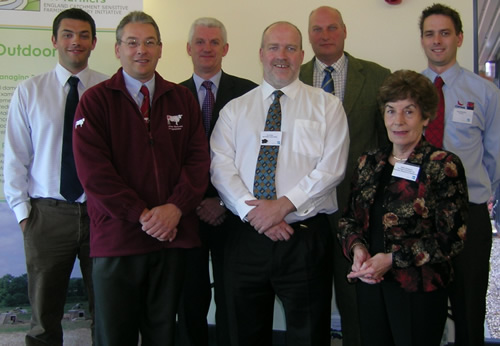
While there were well versed notes of caution at Anglia Farmers’ second annual livestock conference this week (7 October), speakers gave solid hope for the future.
Asked to give an overview on ’Who needs food?’ Baroness Shephard delivered grim statistics. Each year the world’s population increases at a rate equal to the entire population of the UK. By 2050, there will be 9 billion mouths to feed. UN figures show that adverse conditions such as deforestation, climate change and drought remove an area the size of the Ukraine each year from food production. Added to which, 50% of the world’s population are city dwellers with more affluent tastes. Demand for meat has trebled.
"While there is no magic wand there is hope," said Baroness Shephard. "The UK and particularly East Anglia are well placed for food production and the public now recognises that agriculture matters. Organisations like EEDA, the Royal Norfolk Agricultural Association, Easton College and initiatives such as the recent Eastern Daily Press and Bidwells Norfolk Food Festival, as well as an active NFU, all promote the region’s ability to grow food."
Dr Duncan Pullar, head of research and development at Eblex, said Holstein bulls should not be overlooked as a beef business proposition because they have consistently returned the best margins for producers and, treated correctly, deliver good quality beef. He also warned that even though the 30-month rule had been relinquished, extended finishing periods were madness and shorter finishing is where the best margins lie. Fast growth optimises profits and minimises overhead costs. He also explained that visible marbling – or intramuscular fat - in beef was not necessary for great tenderness and flavour and from a profit point of view it is more energy efficient not to allow marbling to get to a stage where it is visible because back fat would be far too deep.
Pfizer’s area veterinary manager Matthew Williams actively encouraged the assembled audience to use worming products responsibly highlighting the increasing resistance to anthelmintics in sheep. His motive is to preserve their effectiveness for longer and encouraged farmers to establish status of resistance, review usage of wormers and implement prevention strategies and in consultation with their vets and advisors draw up an annual policy.
Hugh Ratcliffe, European business development manager for dairy genetics at Genus ABS – sponsors of the conference – promoted use of the UK Fertility Index. Its use, he said, meant dairy farmers would benefit from breeding for fertility and longevity. "A study undertaken by Genus ABS across 12 UK dairy herds numbering 2378 cows, showed that the difference between using the best bulls for Fertility Index and the worst bulls, was 49.7 days open," said Mr Ratcliffe. "This proves that the UK Fertility Index should be used in conjunction with other required traits, when selecting bulls to use on farm."
Speaking at the conference for the second year running, dairy industry commentator Ian Potter said dairy farmers were generally better off than they were last time commodity prices crashed in 2007, particularly those in the liquid market. He said processors need them and are no longer over supplied and cautioned that milk volume was still in decline. He urged farmers in the east considering expansion to go for it now concluding that, "managing market volatility is the biggest challenge the UK dairy industry faces and that factors outside the EU will be the catalyst to lift UK lift milk prices."
Richard Cross, business development manager of K W Trident, talked about bioethanol bi-products from dried distillers grains and solubles (DDGS) providing useful animal feed. Developments at the Vivergo plant near Hull proved the reality of the new opportunity for livestock farmers to embrace liquids, moist feeds and pelleted DDGS.
Summing up conference chairman Tom Crawford, a leading Norfolk dairy farmer, said:
"This really has been a fascinating day. In addition to the excellent papers from the speakers, concerns and opportunities have been exchanged from all who have attended. I think we can all leave the conference with cautiously positive thoughts."
